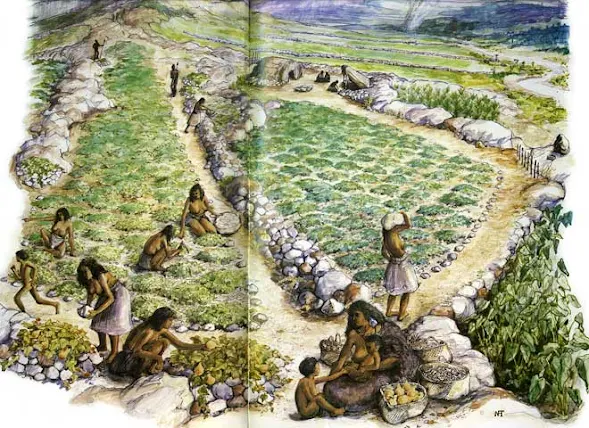Maori Food
This artist's impression shows a food garden in the Auckland region. Its crops include taro at lower right and hue (bottle gourds) at lower left. The larger plots contain kūmara (sweet potato) plants. The plots are kept free of weeds, and protected by stone walls and wooden fences. Women harvest the hue and the smaller kūmara for making kao (dried kūmara).
The rich volcanic soil in the Auckland district supported extensive areas of garden from the 15th century. Scattered stones at Ōtuataua, near Auckland International Airport, once formed walls around garden plots. These paenga-maru (sheltering and dividing walls) were up to one metre high. They marked off the kūmara cultivations, owned and worked by different whānau and hapū groups. The existing stone wall on the left was built in the mid-19th century by European farmers.








Comments